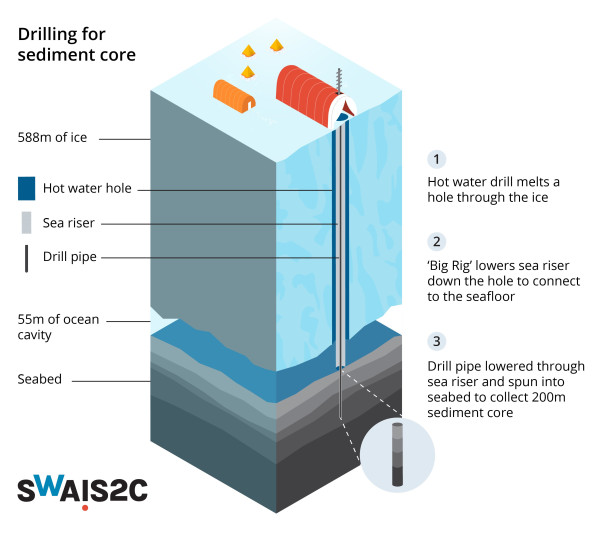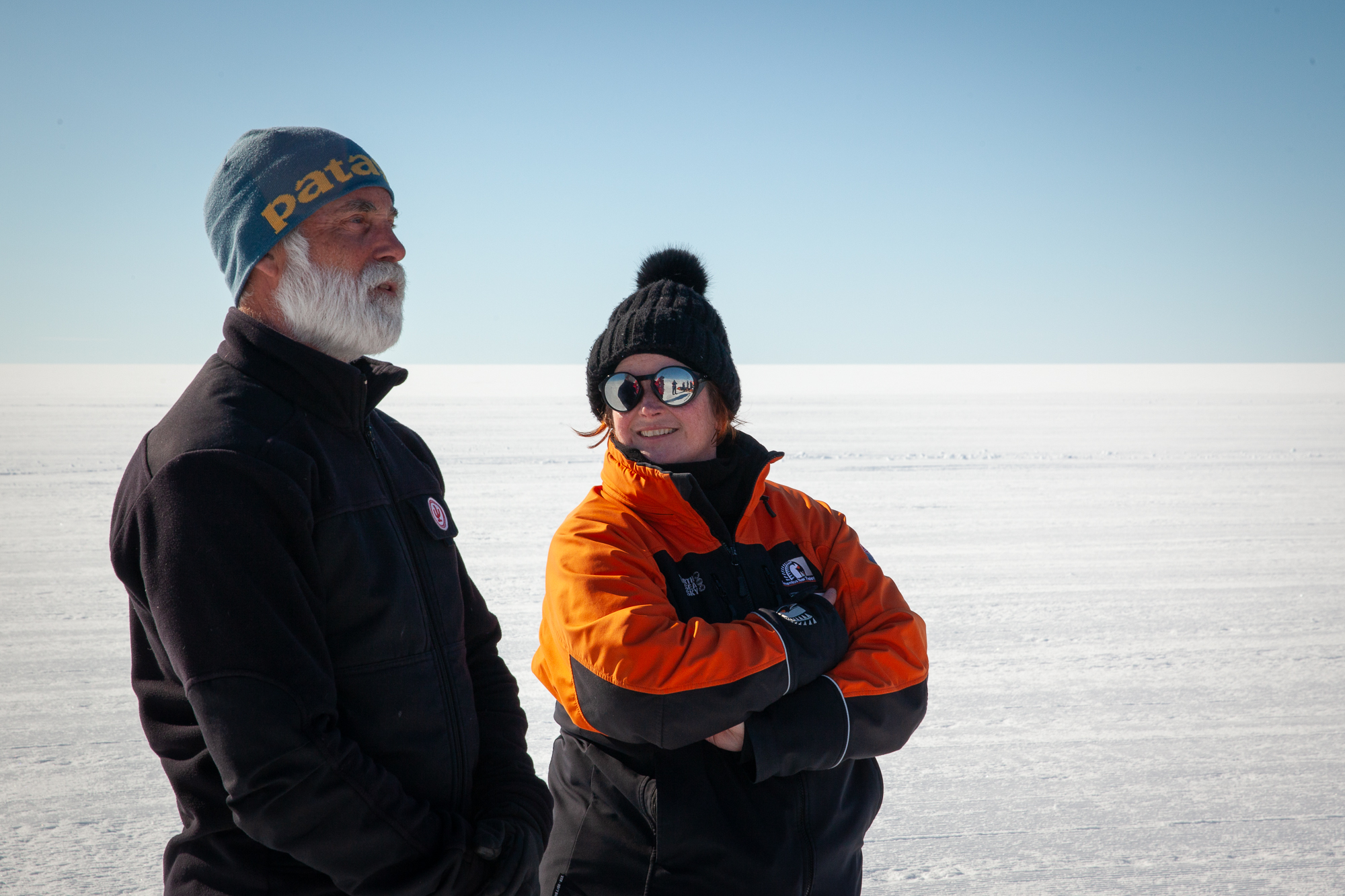SWAIS2C (Sensitivity of the West Antarctic Ice Sheet to 2°C) is a collaboration between research organisations from 10 countries, with Earth Sciences New Zealand, Te Herenga Waka – Victoria University of Wellington and Antarctica New Zealand at the helm leading project management, drilling operations, and logistics.
The mission is hugely ambitious – to obtain 200m of sediment core from the seabed under the Ross Ice Shelf, close to the edge of the West Antarctic Ice Sheet where the ice begins to float. No one has ever drilled so deep, so far from a base.
The coveted core is a series of cylindrical samples taken through layers of mud and rocks, lying beneath 590m of ice and 55m of ocean cavity. These samples should provide a window back to environmental conditions hundreds of thousands of years ago, potentially millions.

The team will identify sediment layers within the core laid down during periods in Earth’s history when temperatures were similar to where we are heading in our near future if we don’t curb greenhouse gas emissions. They’ll search these layers for signs of marine algae. Presence of algae indicates open ocean above, suggesting the collapse of the Ross Ice Shelf.
The ice shelf provides a protective buttress holding back the huge West Antarctic Ice Sheet, which contains enough water locked up as ice to raise average sea levels by 4-5 metres.
SWAIS2C is seeking to determine what temperature is the tipping point that will trigger unavoidable melt. The environmental data in the core will help build a picture of how the West Antarctic Ice Sheet will respond to future warming, and whether we are looking at a partial or complete collapse at 1.5 or 2°C.
"The knowledge that we’re trying to gain is not just because it’s interesting, it’s because it matters. It will feed into policy to help make the world a better, more resilient place as we battle with climate change."
Richard Levy, SWAIS2C Co-Chief Scientist
A formidable challenge in the harshest place on Earth
In November 2024, SWAIS2C’s second field season kicked off with the departure of six of Antarctica New Zealand’s camp crew on the traverse – a convoy of PistenBully polar vehicles towing the load of fuel, science and drilling equipment and supplies to sustain the camp for the approximately 8-week season. Their 1128 km journey across the Ross Ice Shelf took 14 days, with the use of a Ground Penetrating Radar to detect and avoid treacherous crevasses.
Once they arrived at KIS3 on the edge of the West Antarctic Ice Sheet they made a ‘skiway’ on the ice, allowing the drillers and scientists to fly in (860 km ‘as the crow flies’) on ski-equipped aircraft.
With the camp set-up, the drillers got underway with assembling the drill tent and testing the custom-designed ‘Big Rig’ that will be used to drill into the seabed. But during testing of the drilling system a key piece of the hydraulic motor snapped, setting in motion a race against time to locate a replacement part and get it shipped to Antarctica.
SWAIS2C’s Communication Manager Ana Tovey was part of the on-ice team, and recounts what happened next in this article in the Sunday Star-Times, and the 15-minute documentary below.

